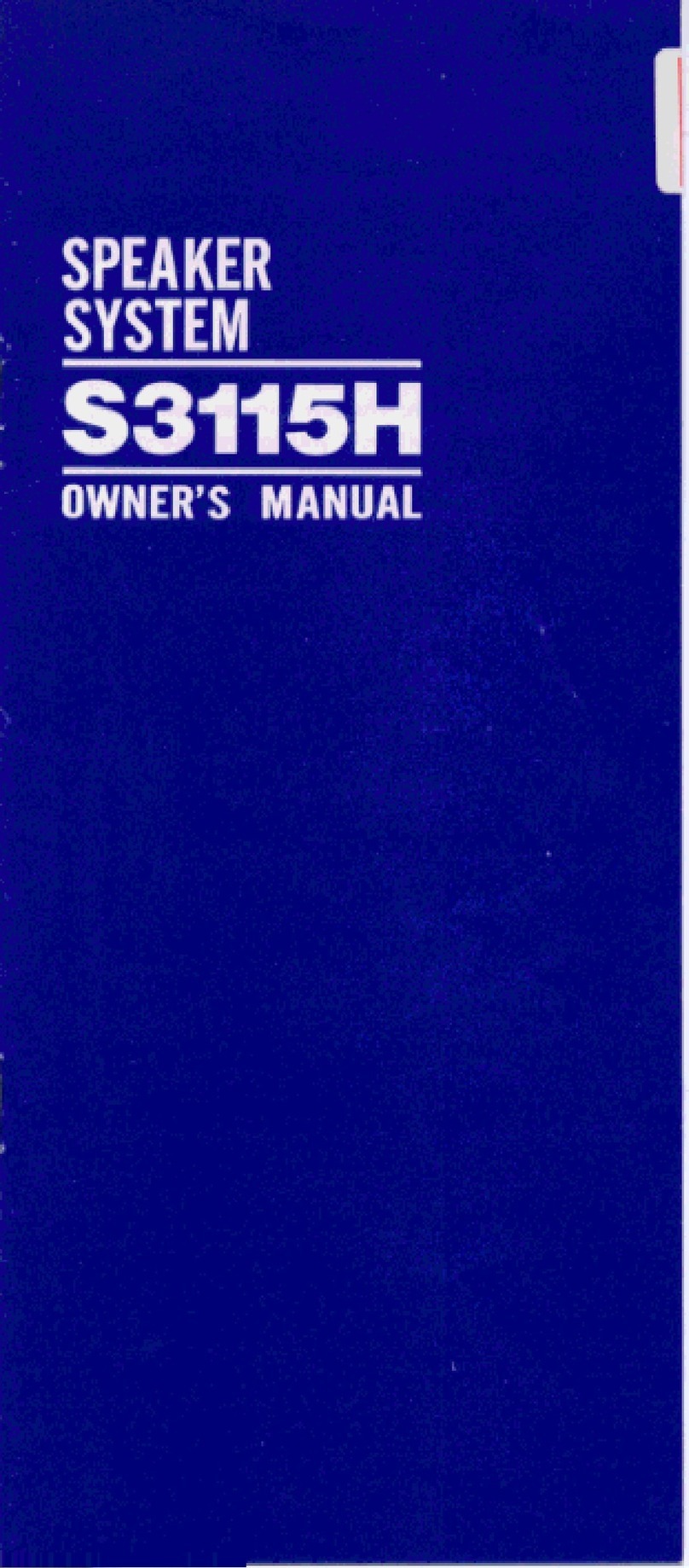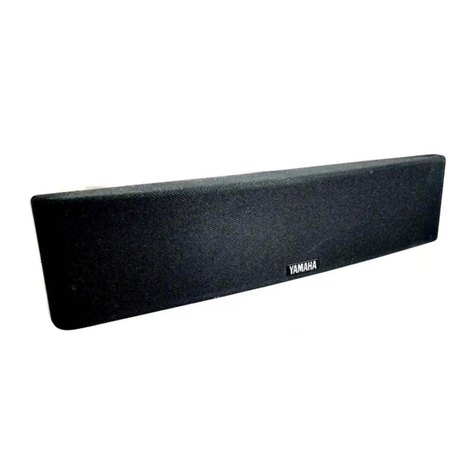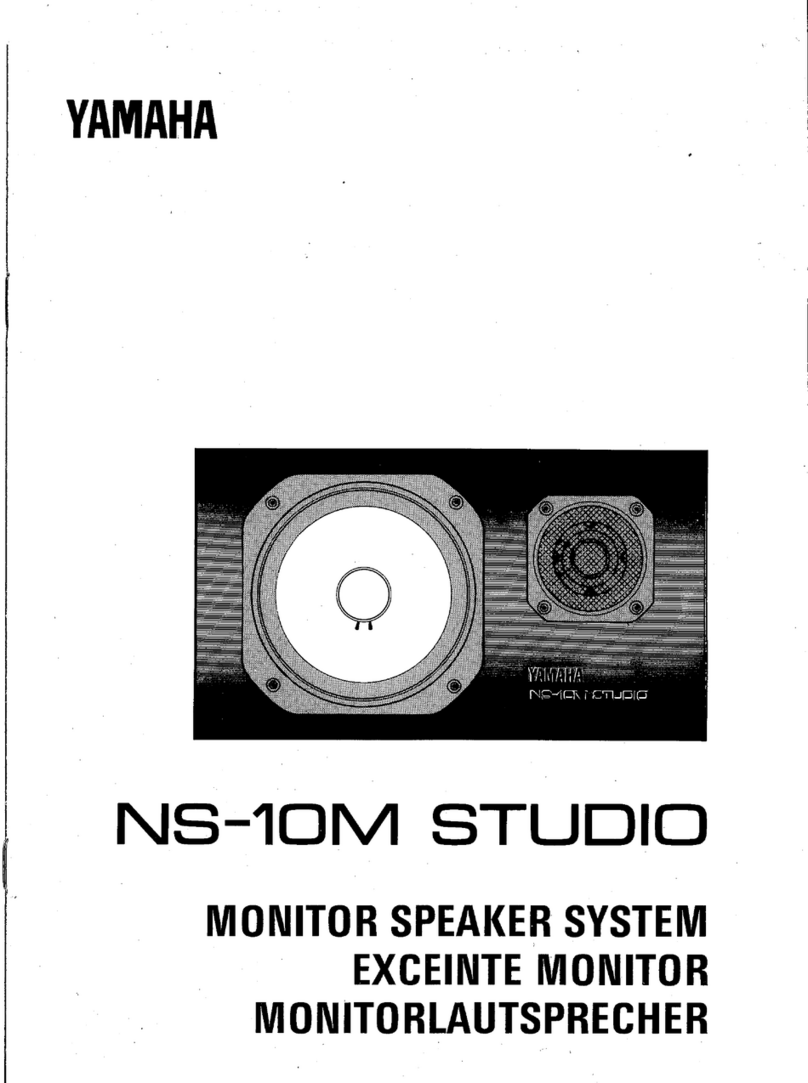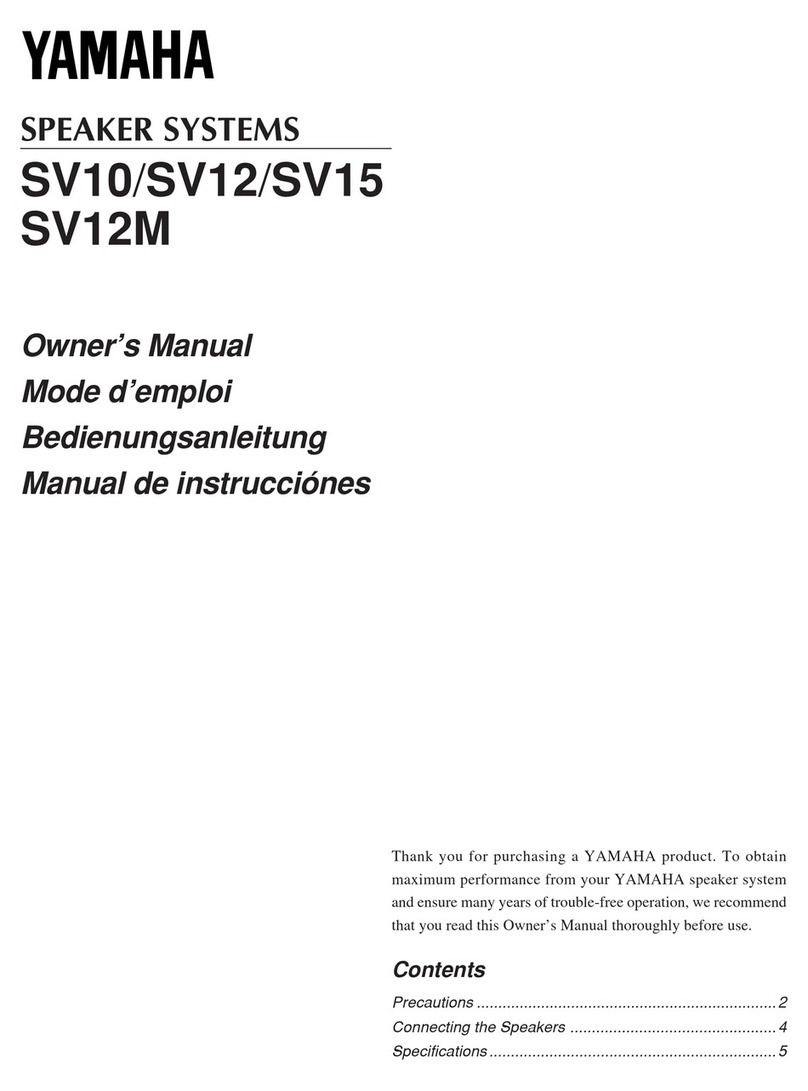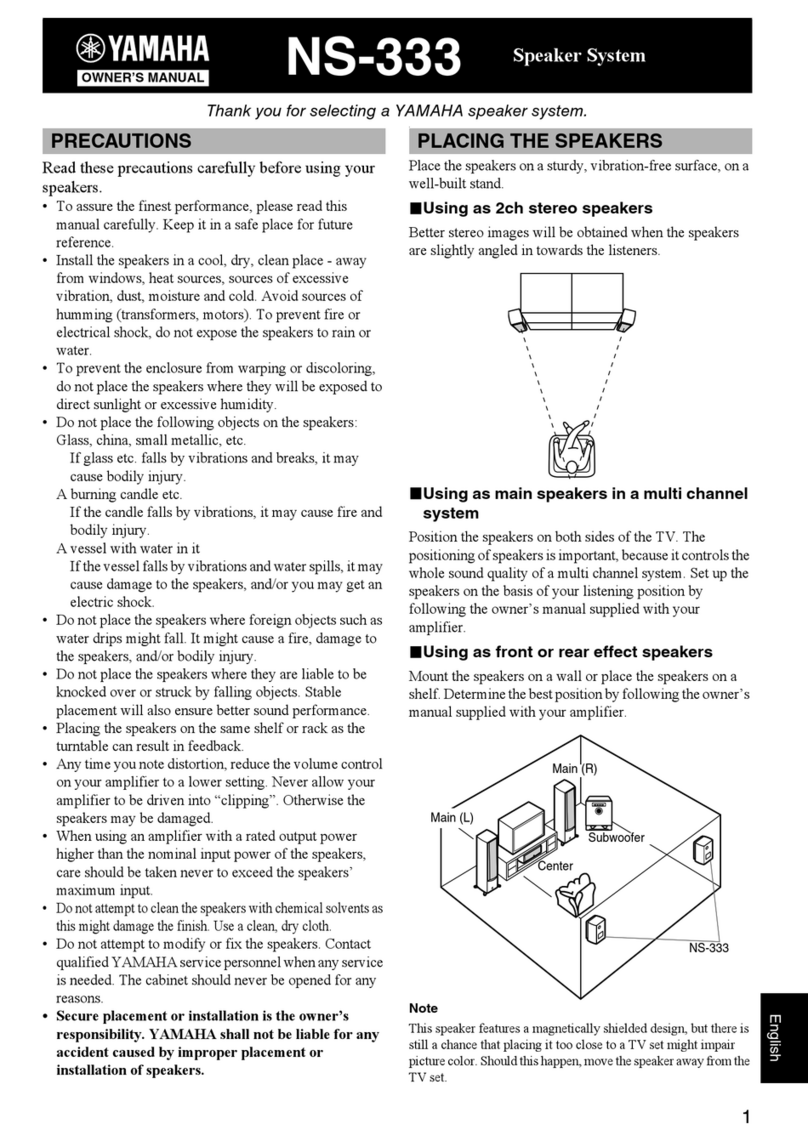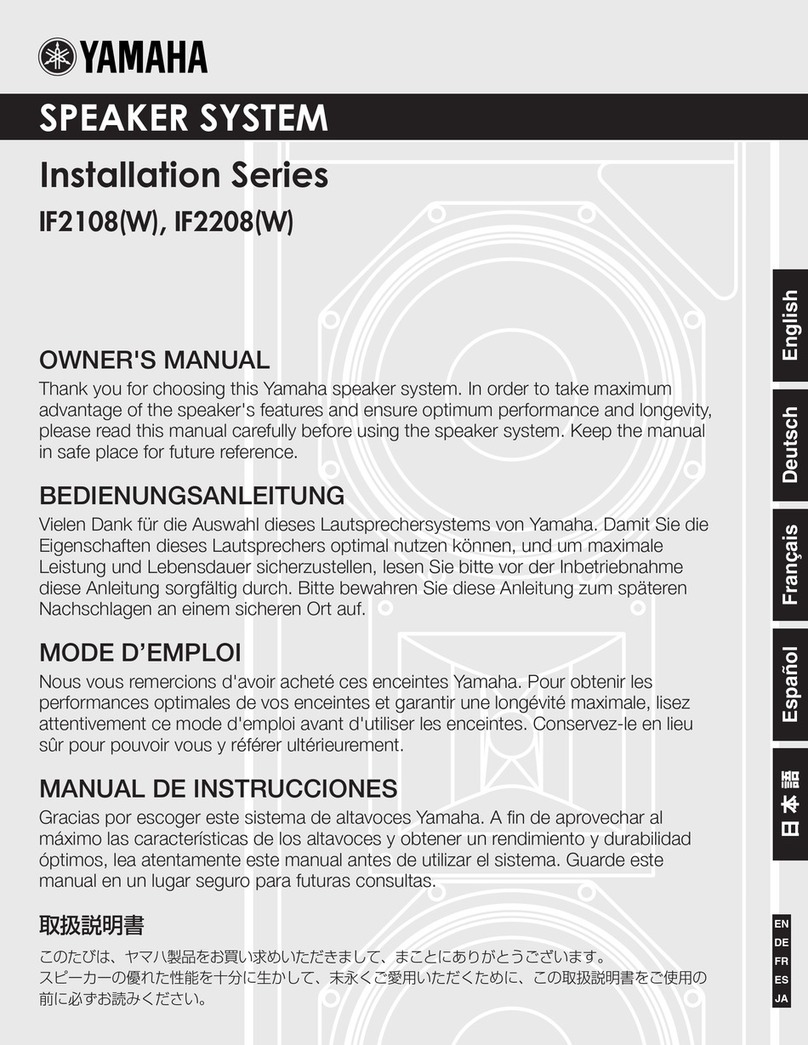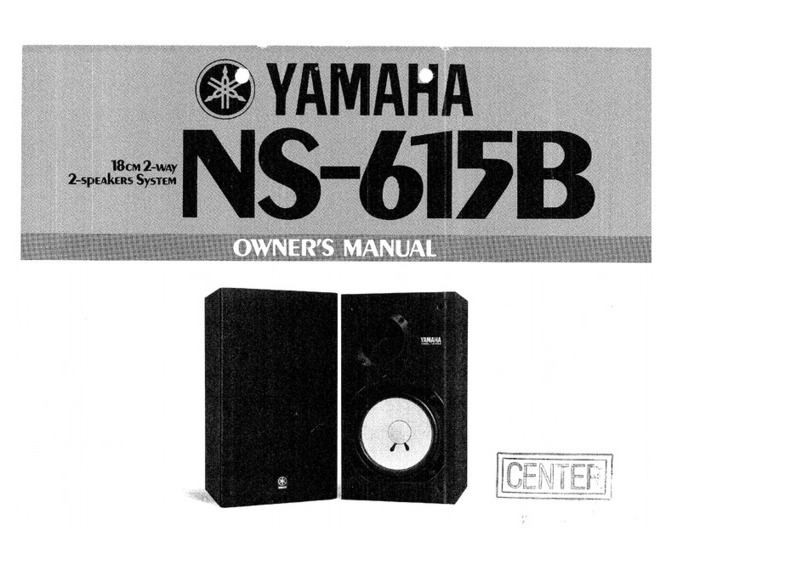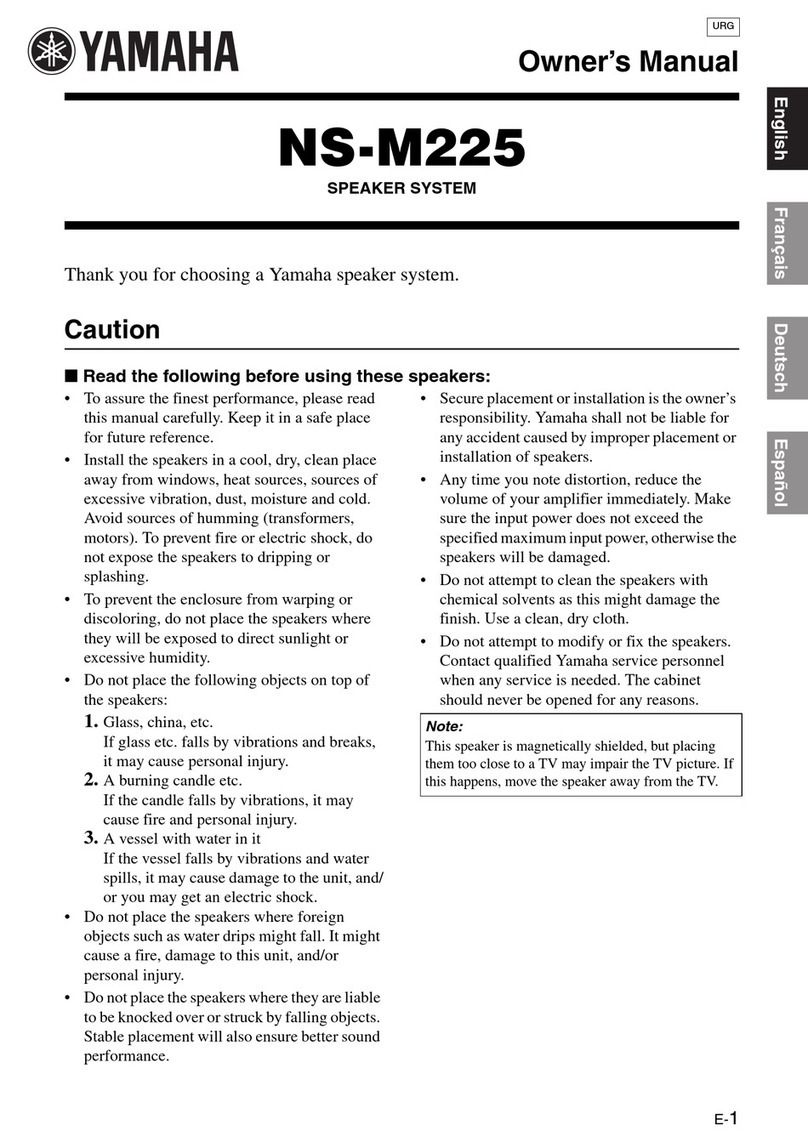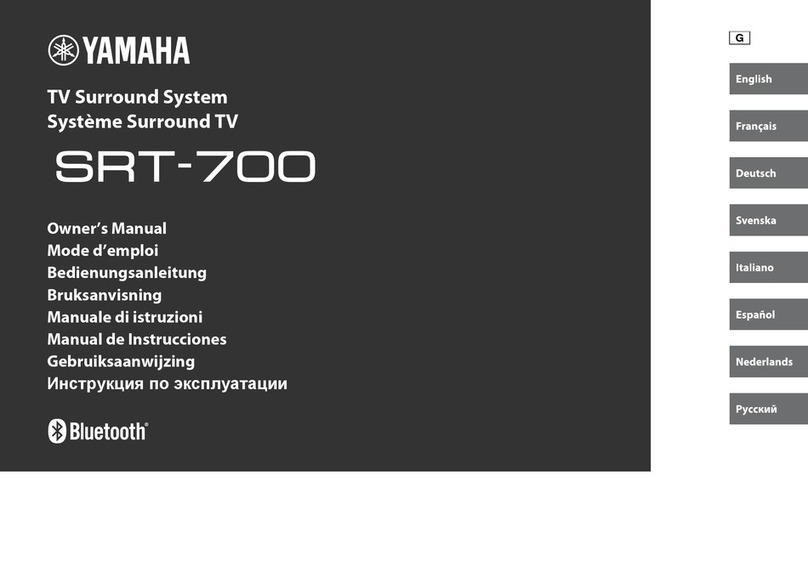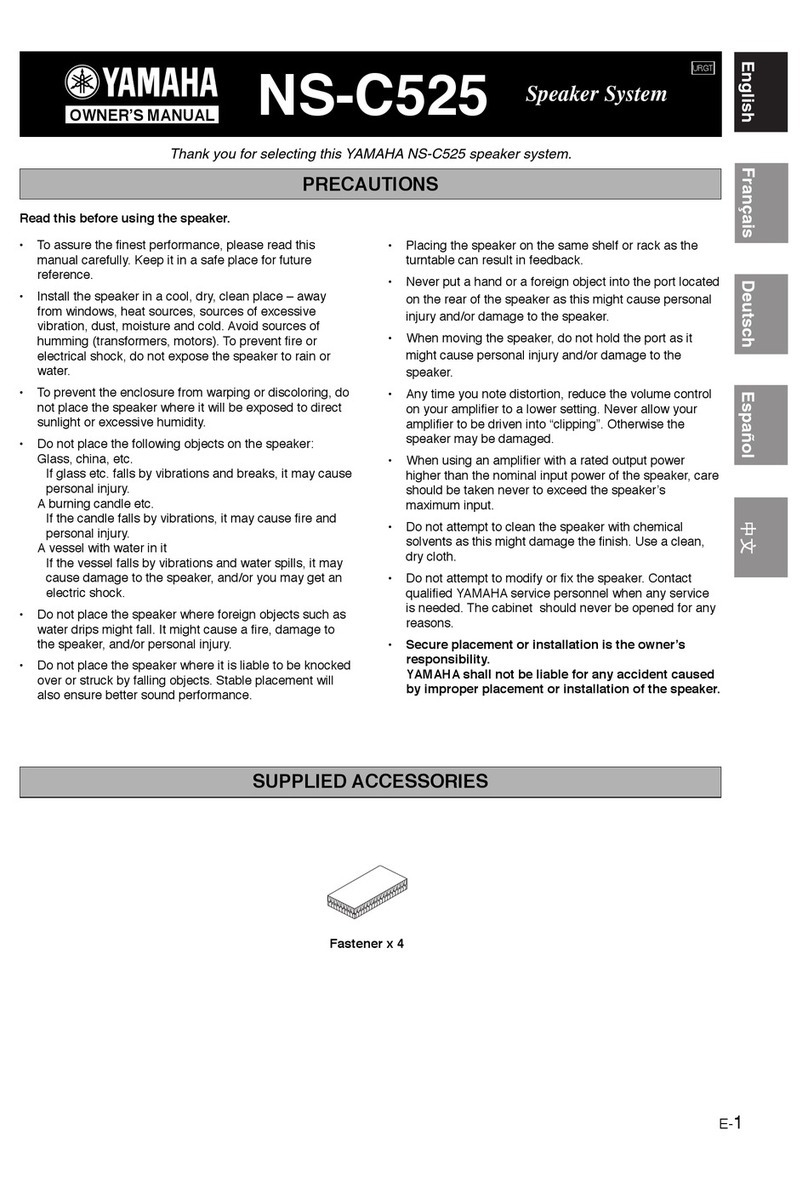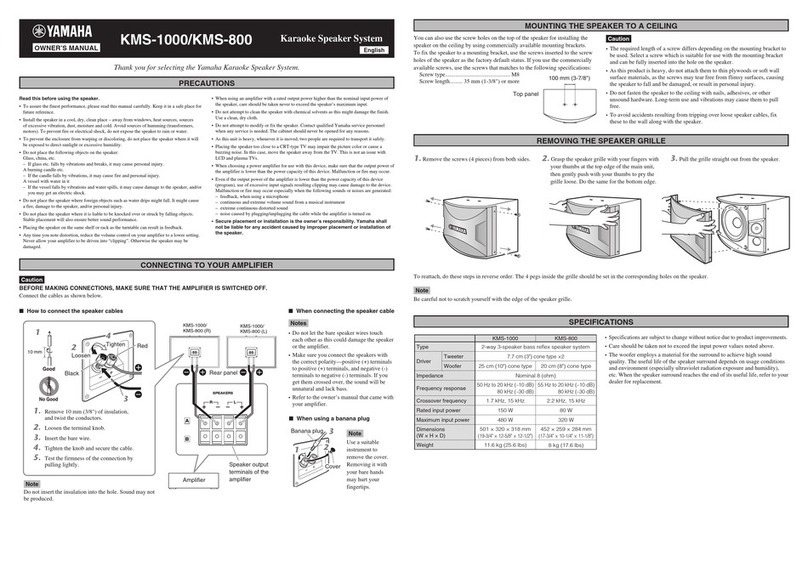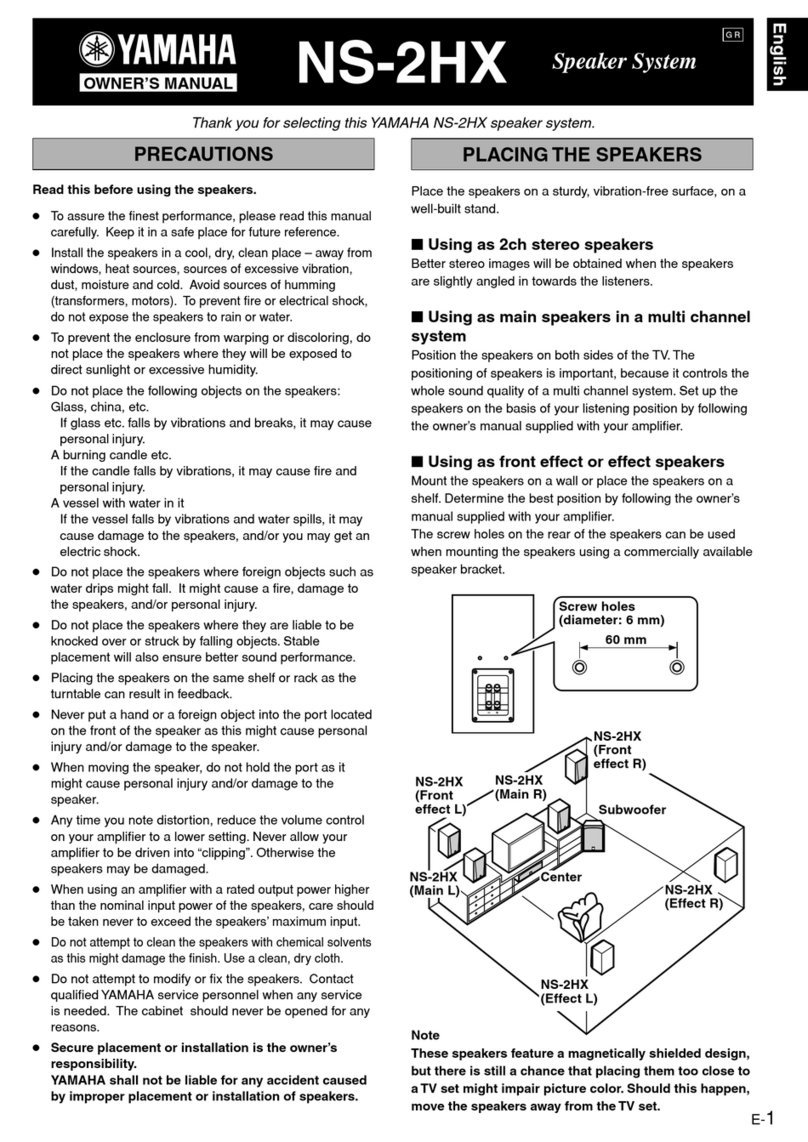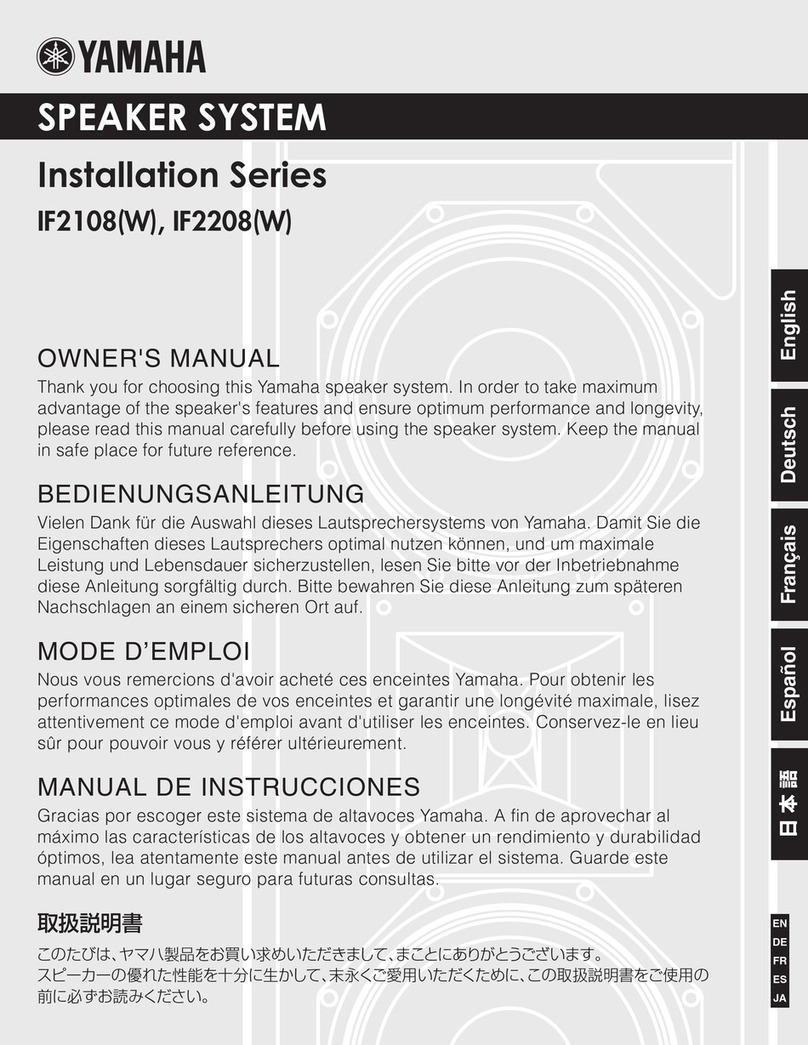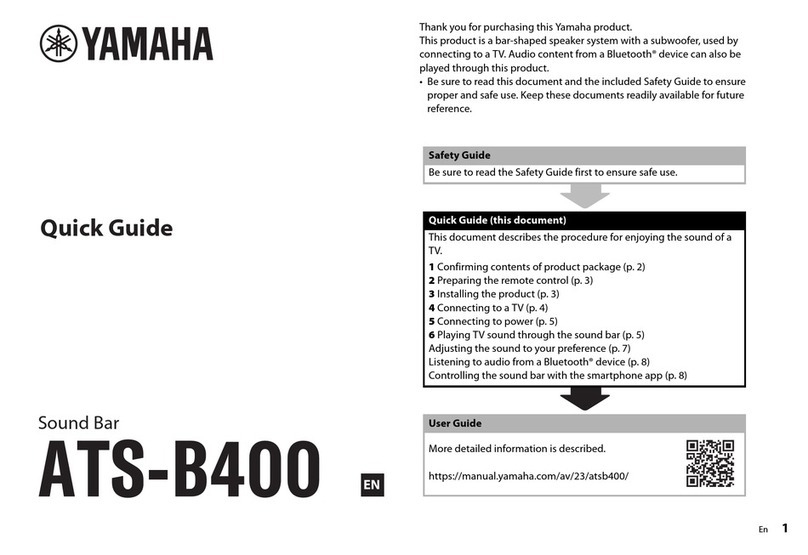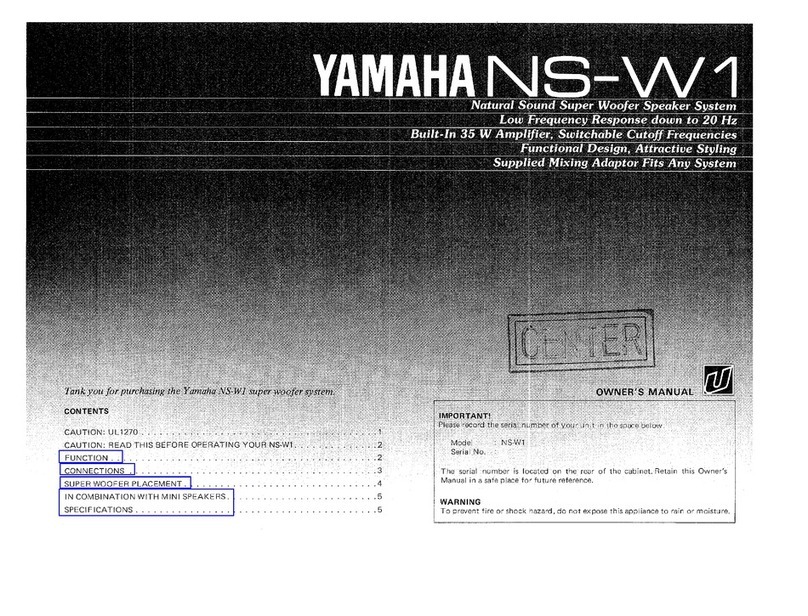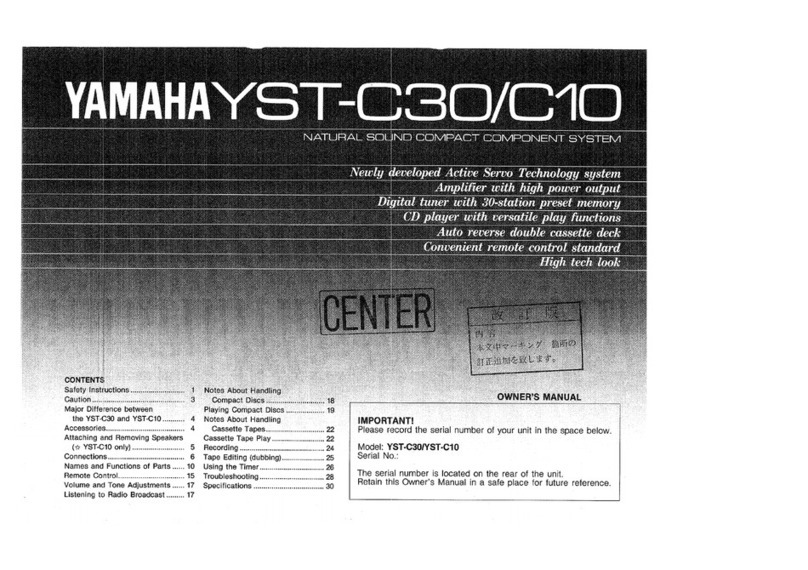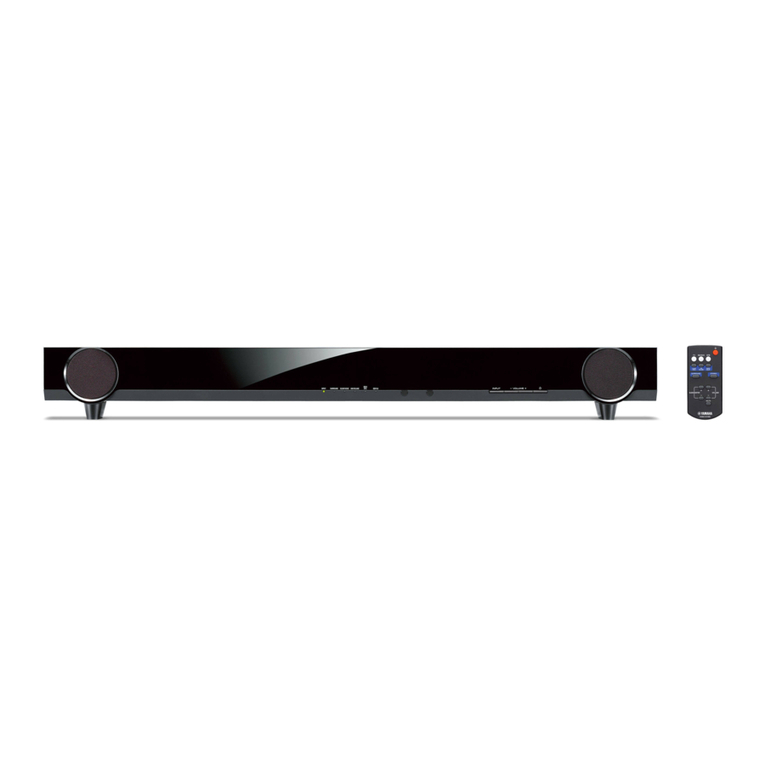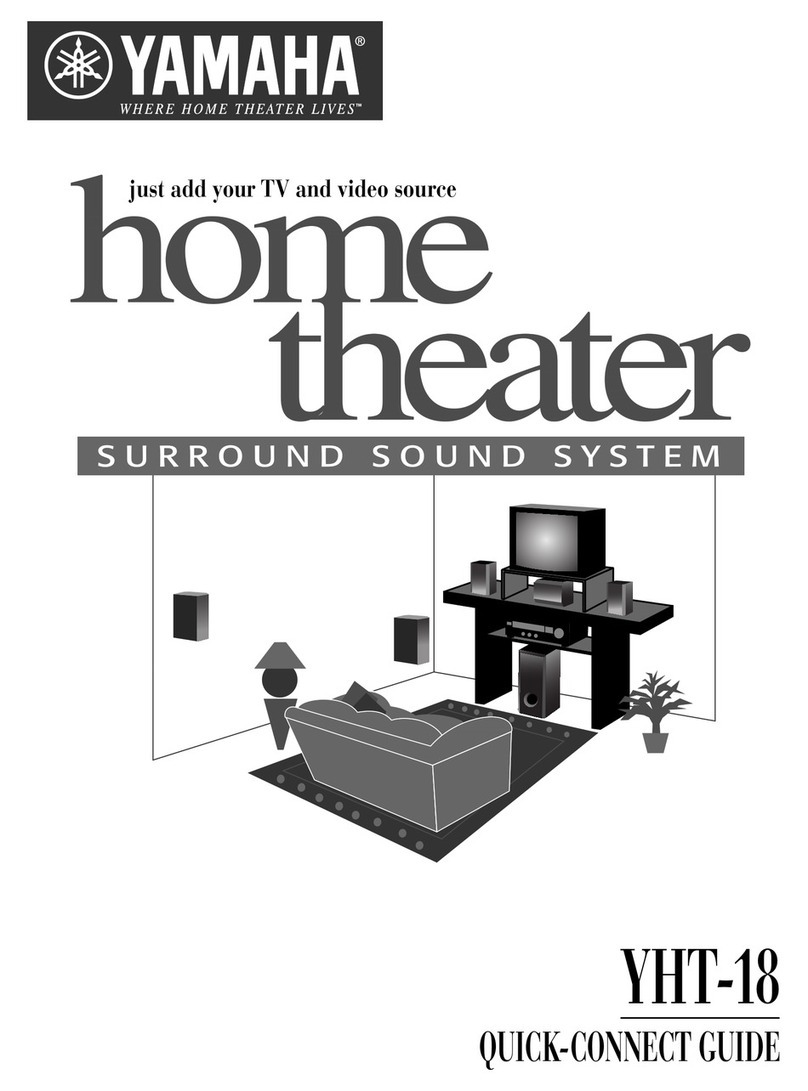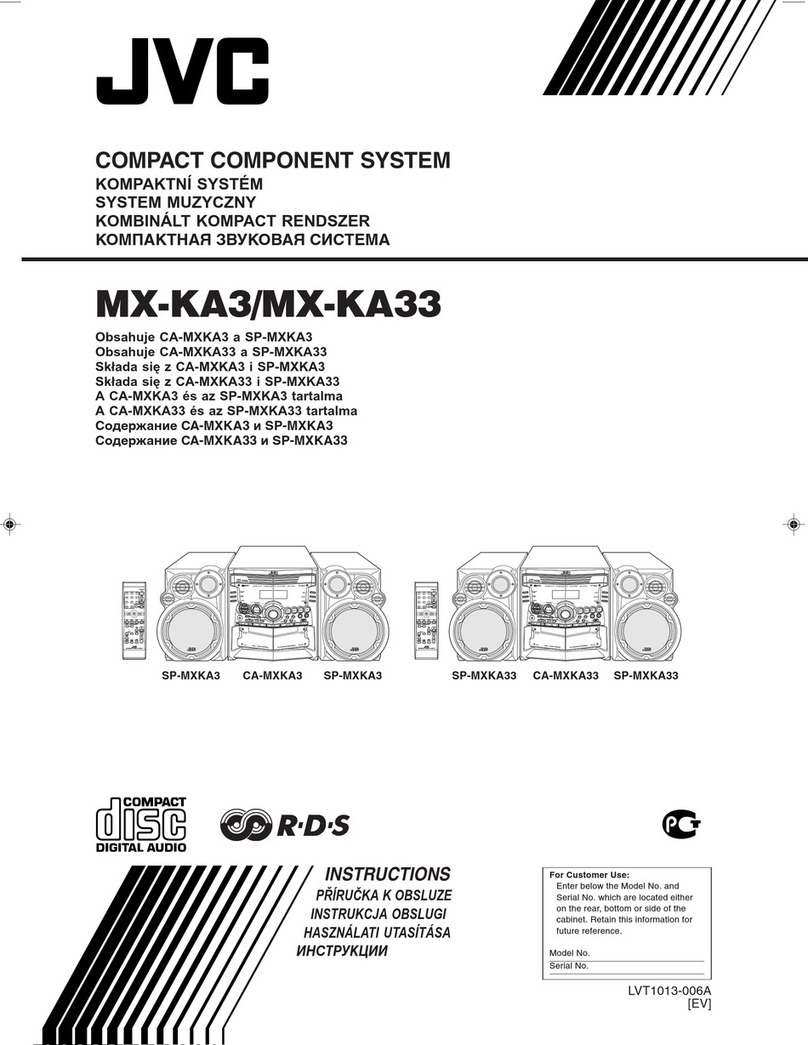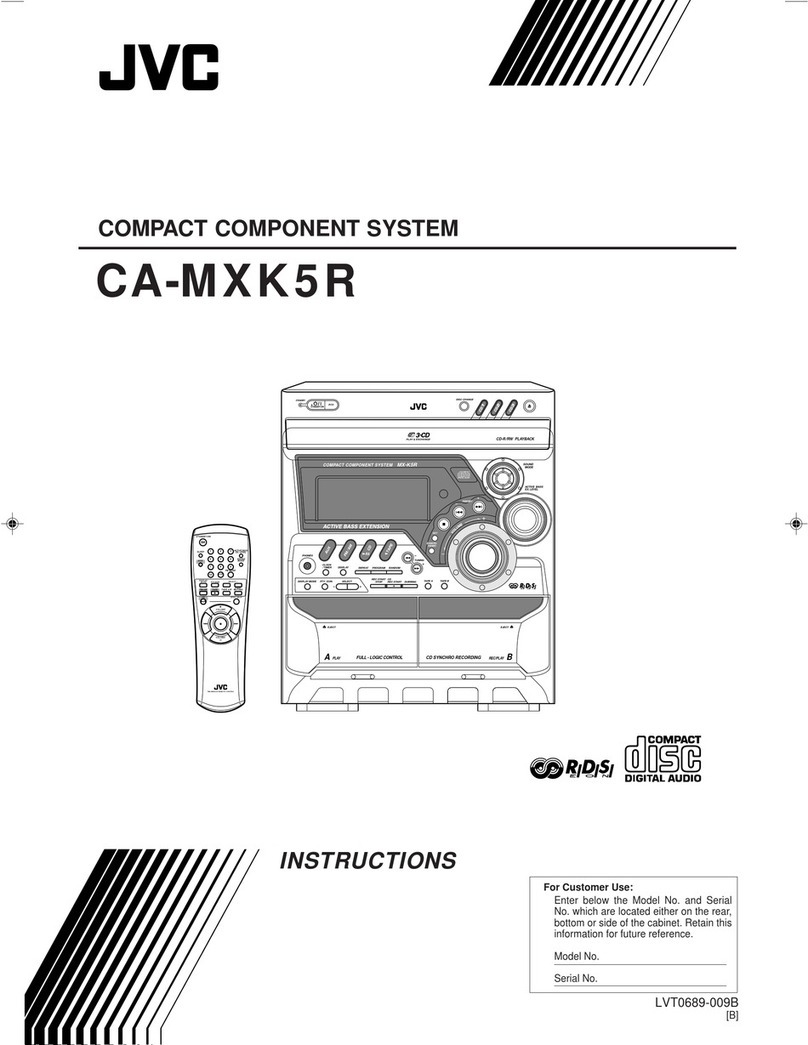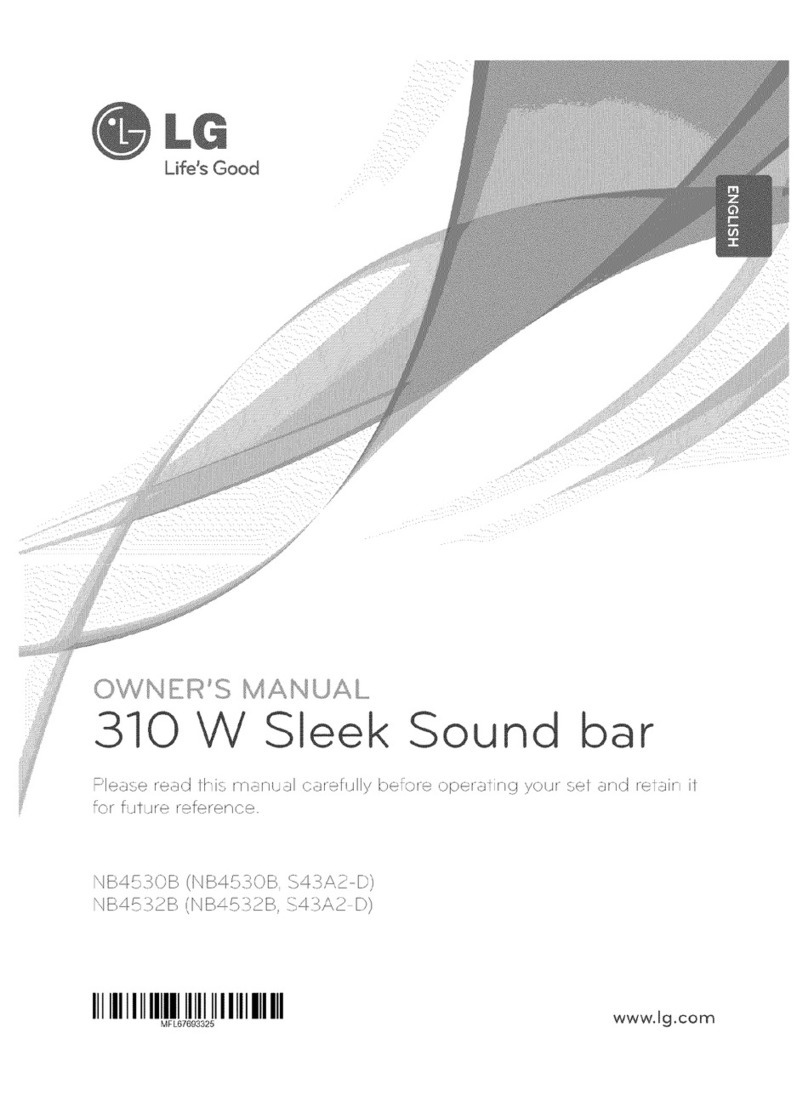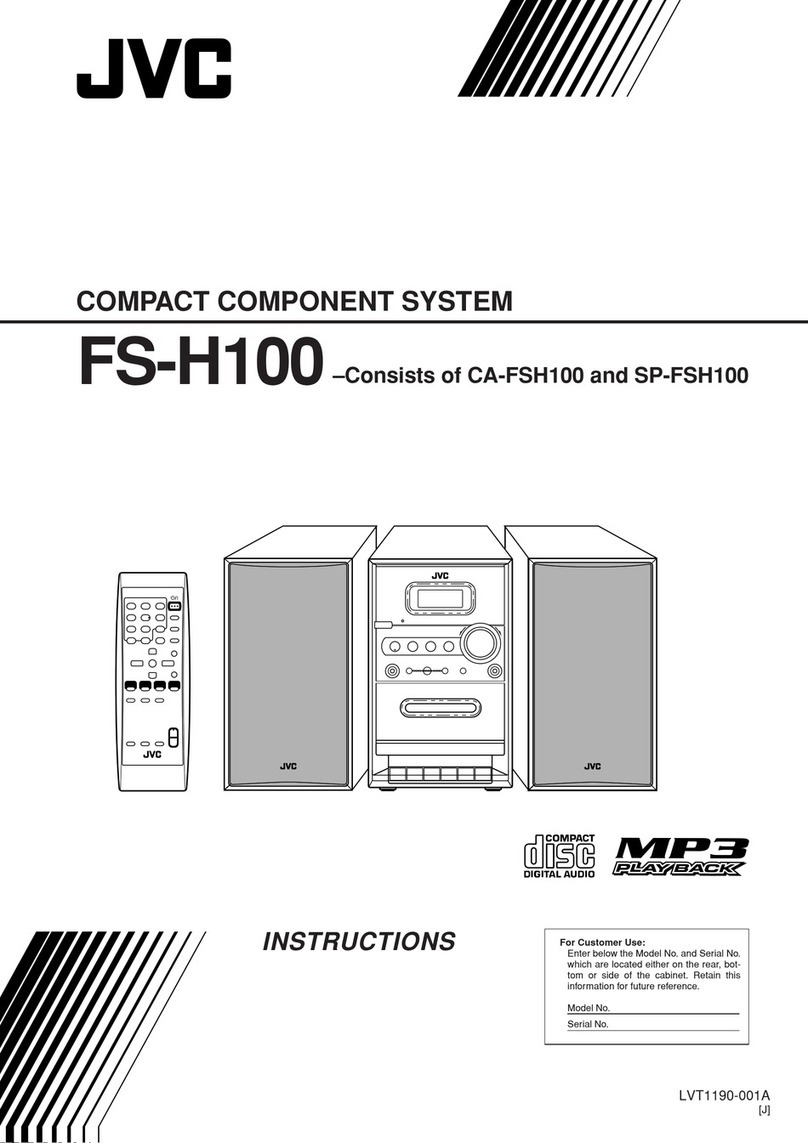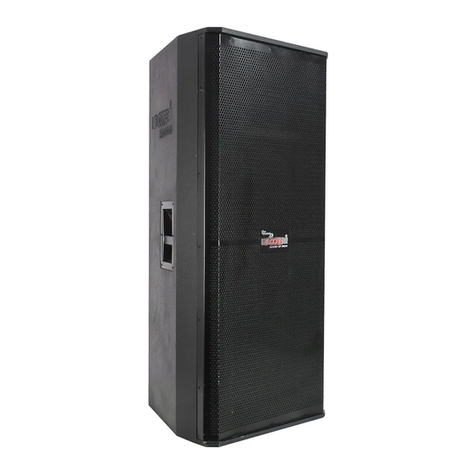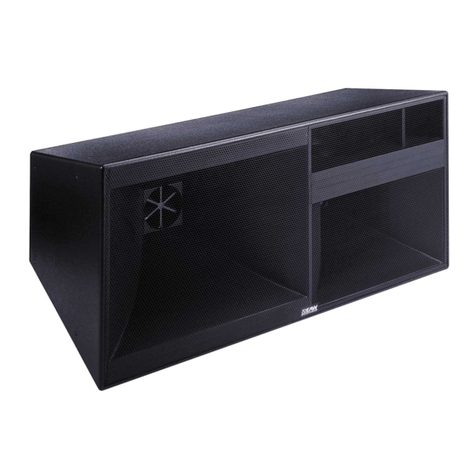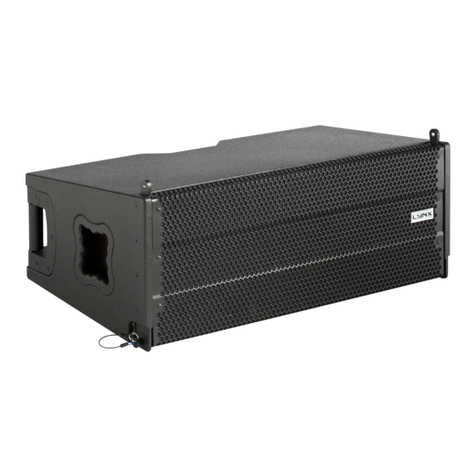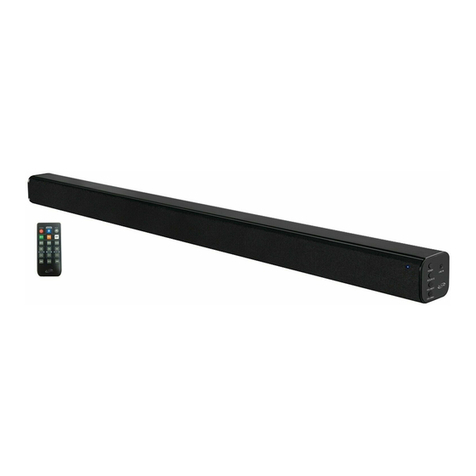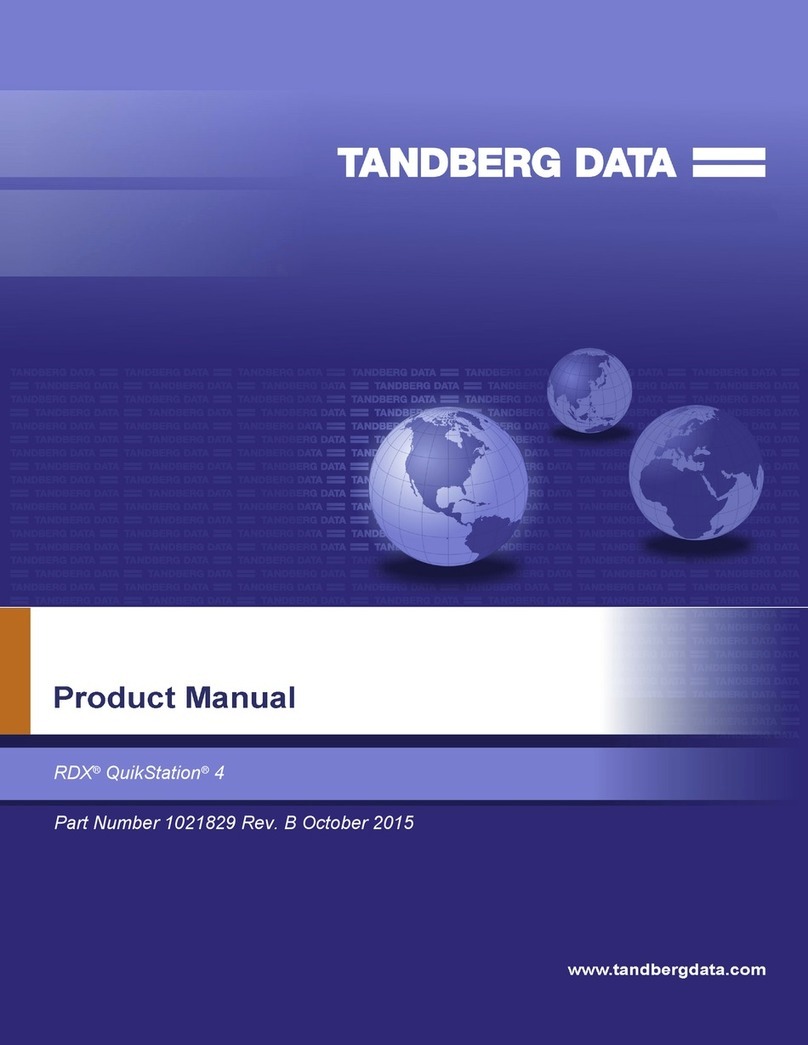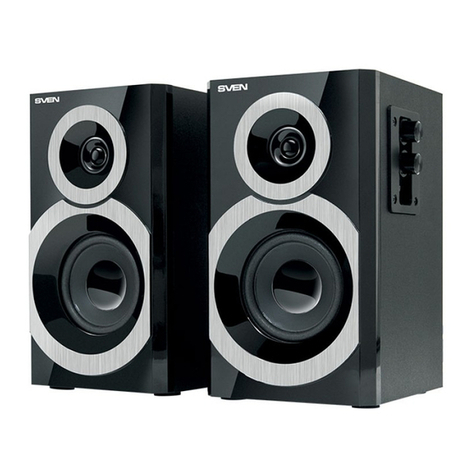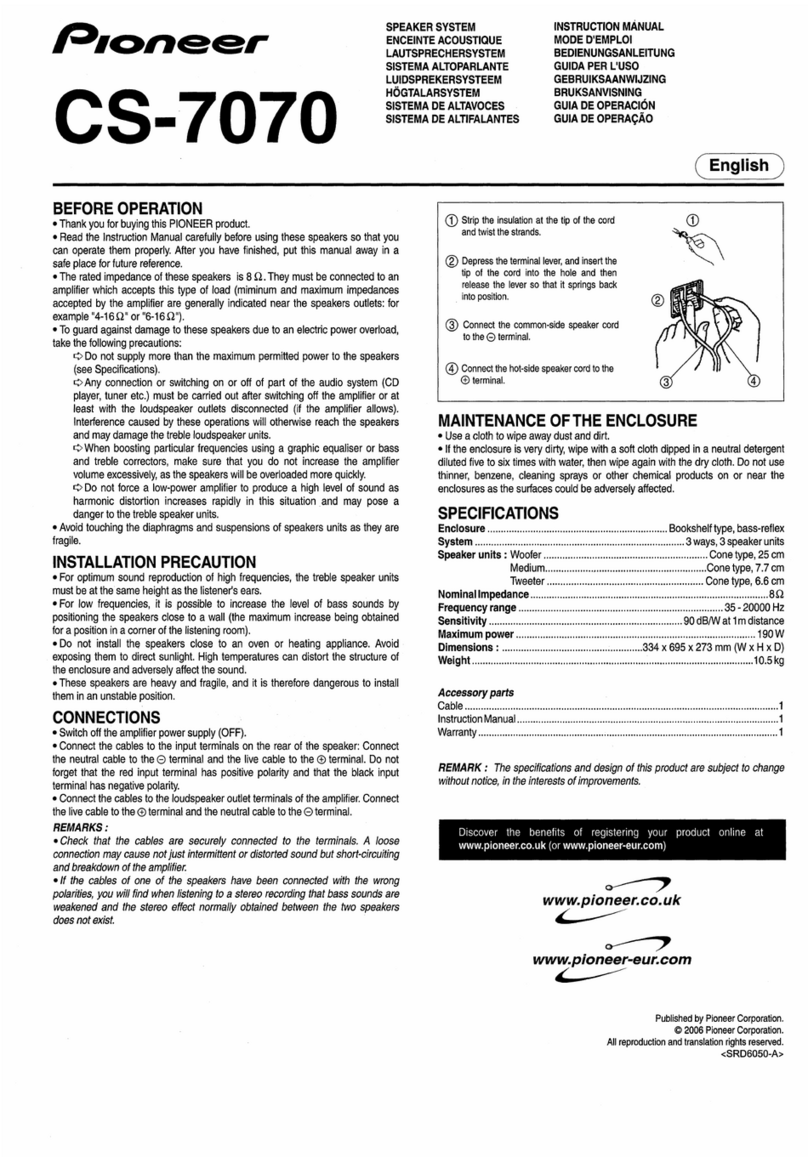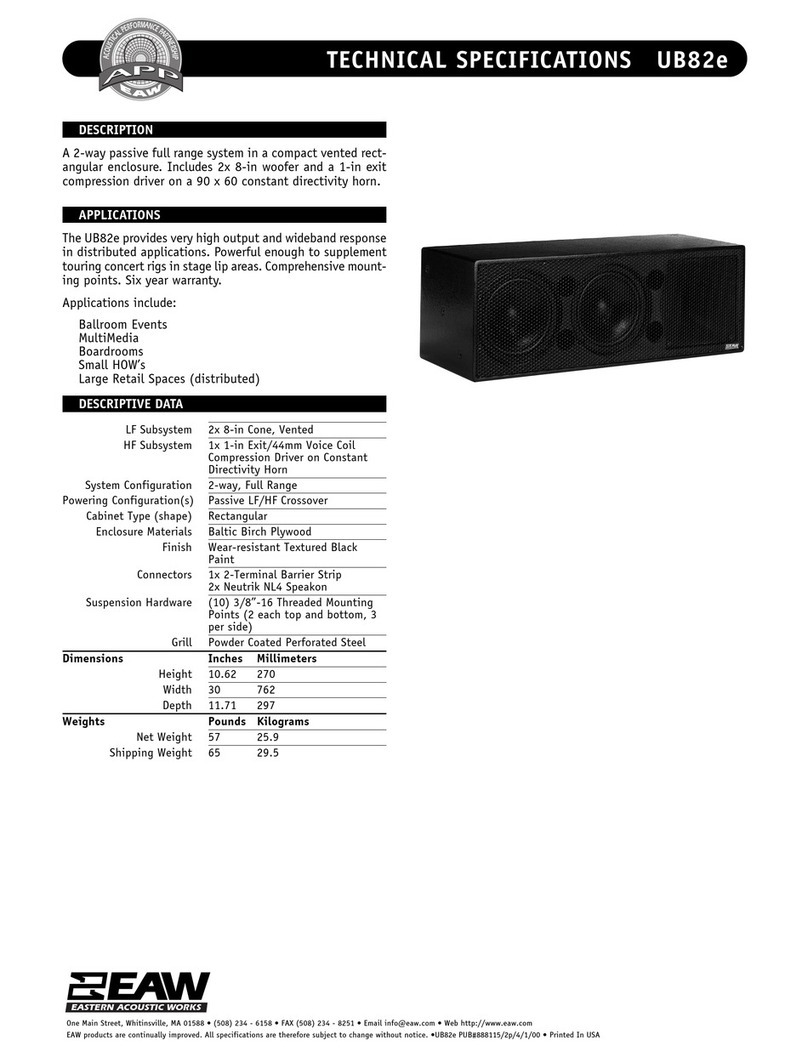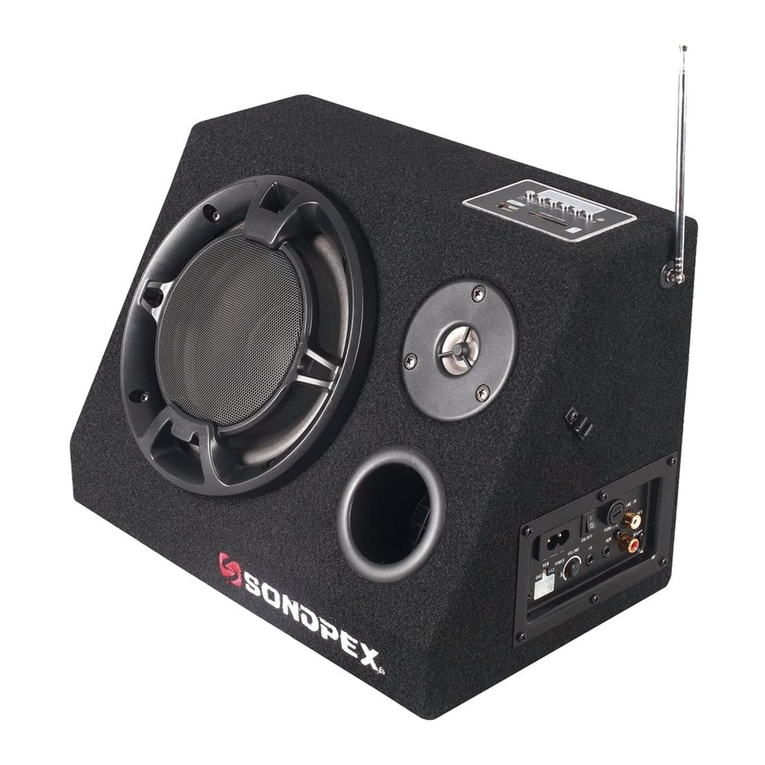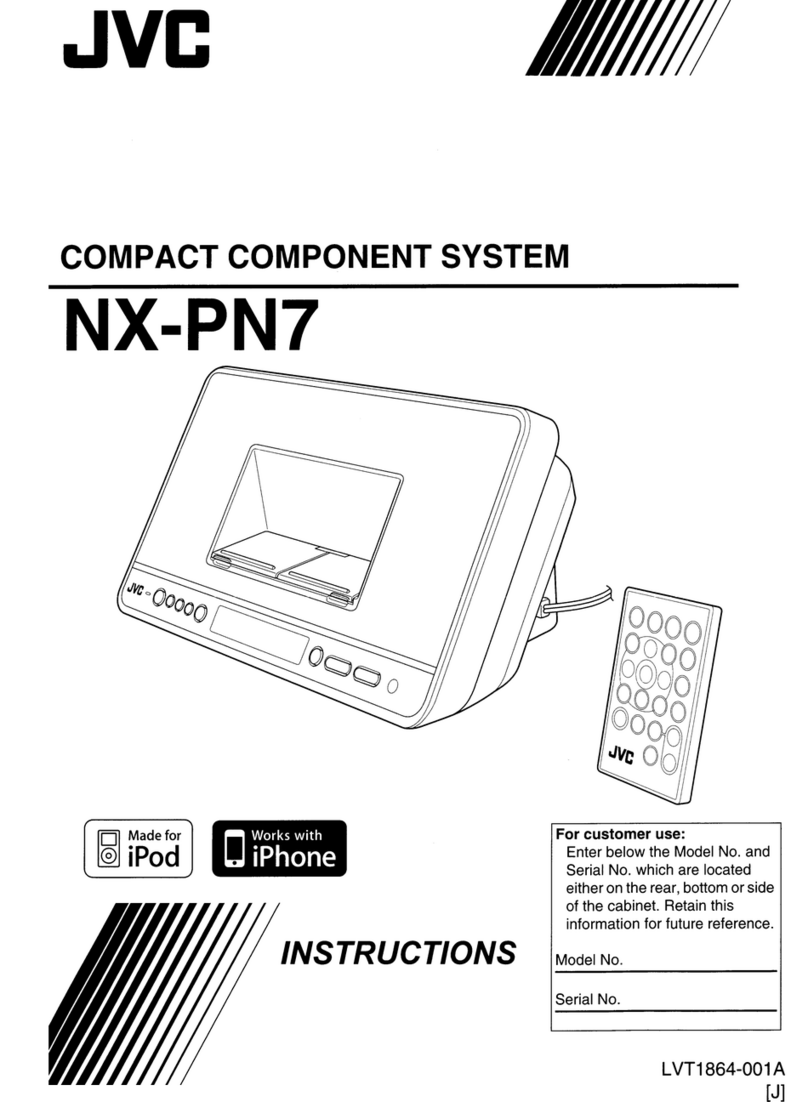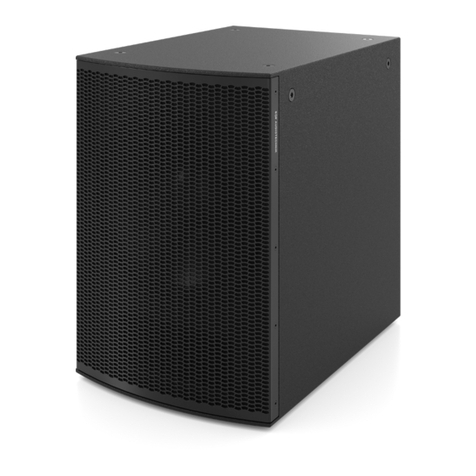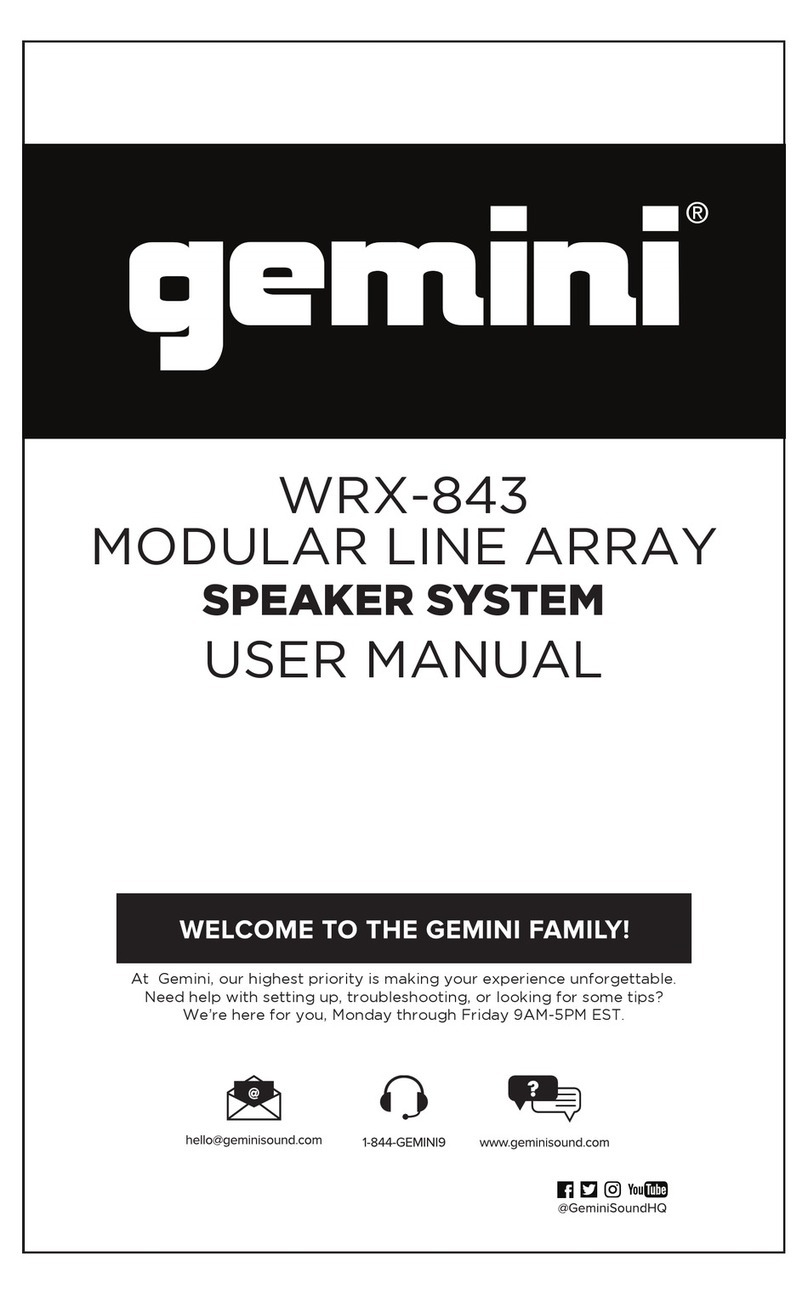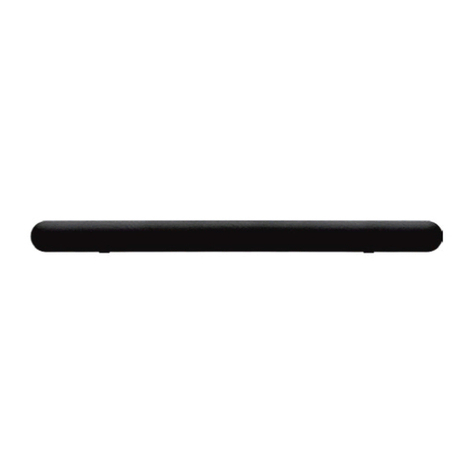
ii
Explication des symboles
POUR LES CONSOMMATEURS CANADIENS
Pour éviter les chocs électriques, introduire la lame la
plus large de la fiche dans la borne correspondante de la
prise et pousser jusqu’au fond.
CAN ICES-3 (B)/NMB-3 (B)
1 Lire ces instructions.
2 Conserver ces instructions.
3 Tenir compte de tous les avertissements.
4 Suivre toutes les instructions.
5 Ne pas utiliser cet appareil à proximité de l’eau.
6 Nettoyer cet appareil avec un chiffon sec seulement.
7 Ne pas recouvrir les ailettes de ventilation. Installer
l’appareil selon les instructions du fabricant.
8 Ne pas installer près d’une source de chaleur,
comme un appareil de chauffage, une résistance
électrique, un poêle, ou tout autre appareil
(amplificateurs compris) produisant de la chaleur.
9 Ne pas désamorcer le système de sécurité d’une fiche
polarisée ou d’une fiche avec mise à la terre. Une
fiche polarisée est munie de deux lames, dont l’une est
plus large que l’autre. Une fiche avec mise à la terre
est munie de deux lames et d’une broche de terre. La
lame la plus large ou la troisième broche sont reliées à
la terre pour des raisons de sécurité. Si la fiche fournie
ne s’insère pas dans la prise, s’adresser à un
électricien pour faire remplacer la prise obsolète.
10 Protéger le cordon d’alimentation de sorte qu’il ne
risque pas d’être piétiné ou coincé, surtout au niveau
des fiches, des prises et de sa sortie de l’appareil.
11 Utiliser seulement les fixations
et accessoires spécifiés par le
fabricant.
12 Utiliser seulement le chariot,
socle, trépied, support ou
meuble spécifié par le fabricant
ou vendu avec l’appareil. Si un
chariot est utilisé, faire
attention de ne pas se blesser
ou de le renverser pendant le transport de l’appareil.
13 Débrancher cet appareil pendant les orages électriques,
ou s’il ne doit pas être utilisé pendant un certain temps.
14 Pour toute inspection s’adresser à un personnel
qualifié. Une inspection est nécessaire en cas de
dommage, quel qu’il soit, par exemple cordon
d’alimentation ou fiche endommagé, liquide
répandu ou objet tombé à l’intérieur de l’appareil,
exposition de l’appareil à la pluie ou à l’humidité,
fonctionnement anormal ou chute de l’appareil.
Nous vous souhaitons un plaisir musical durable
Yamaha et le Groupe des Entreprises
Électroniques Grand Public de
l’Association des Industries Électroniques
vous demandent de tirer le meilleur parti
de votre équipement tout en écoutant à un
niveau non dommageable pour l’ouïe,
c’est-à-dire un niveau où vous pouvez
obtenir un son fort et clair, sans hurlement
ni distorsion, mais sans aucun danger pour
l’ouïe. Comme les sons trop forts causent des lésions auditives
qui ne peuvent être détectées qu’à long terme, lorsqu’il est trop
tard, Yamaha et le Groupe des Entreprises Électroniques
Grand Public de l’Association des Industries Électroniques
vous déconseillent l’écoute prolongée à des volumes excessifs.
PRÉCAUTIONS CONCERNANT LA SÉCURITÉ
ATTENTION : POUR RÉDUIRE LES RISQUES
D’INCENDIE ET DE DÉCHARGE ELECTRIQUE,
NE PAS RETIRER LE COUVERCLE (OU LE
PANNEAU ARRIÈRE). AUCUNE PIÈCE
INTERNE NE PEUT ÊTRE CHANGÉE PAR
L’UTILISATEUR. POUR L’ENTRETIEN,
S’ADRESSER À UN PERSONNEL QUALIFIÉ.
L’éclair avec une flèche à
l’intérieur d’un triangle équilatéral
est destiné à attirer l’attention de
l’utilisateur sur la présence d’une
« tension dangereuse » non isolée à
l’intérieur du produit, pouvant être
suffisamment élevée pour
constituer un risque d’électrocution.
Le point d’exclamation à
l’intérieur d’un triangle équilatéral
est destiné à attirer l’attention de
l’utilisateur sur la présence
d’instructions importantes sur
l’emploi ou de la maintenance
(réparation) de l’appareil dans la
documentation fournie.
IMPORTANT
Veuillez enregistrer le numéro de série de cet appareil
dans l’espace réservé à cet effet, ci-dessous.
MODÈLE :
No. de série :
Le numéro de série se trouve au bas de l’appareil.
Prière de conserver le mode d’emploi en lieu sûr pour
toute référence future.
ATTENTION
RISQUE DE
CHOC
ÉLECTRIQUE
NE PAS
OUVRIR
• Cet appareil est conforme à la Partie 15 du Règlement FCC et au RSS-Gen du Règlement IC.
• Le fonctionnement est soumis aux deux conditions suivantes: 1) Cet appareil ne peut pas causer d’interférences nuisibles et
2) Cet appareil doit recevoir toutes les interférences, y compris celles pouvant entraîner des problèmes de fonctionnement.
Consultez le mode d’emploi si vous soupçonnez que la réception radio subit des interférences.
AVERTISSEMENT FCC
Tout changement apporté sans l’approbation expresse du fabricant pourrait entraîner l’annulation du droit d’utilisation de l’appareil.
REMARQUE
Cet appareil a été testé et il s’est avéré être conforme aux limites déterminées pour un appareil numérique de Classe B,
conformément à la partie 15 du Règlement FCC. Ces limites sont destinées à offrir une protection raisonnable contre les
interférences nuisibles pouvant survenir en cas d’utilisation de ce produit dans un environnement domestique.
Cet appareil produit, utilise et peut émettre de l’énergie radioélectrique et, s’il n’est pas installé conformément aux
instructions, peut provoquer des interférences radio. Il n’est toutefois pas garanti qu’aucune interférence ne se produira
dans le cas d’une installation donnée. Si l’appareil provoque des interférences nuisibles à la réception de programmes
radio ou de télévision, ce qui peut être déterminé en éteignant, puis en allumant l’appareil, l’utilisateur est prié de tenter
de corriger le problème en prenant l’une ou plusieurs des mesures suivantes:
−Réorienter ou déplacer l’antenne réceptrice.
−Éloigner davantage l’appareil du récepteur.
−Raccorder l’appareil à une prise d’un circuit différent de celui du récepteur.
−Consulter le revendeur ou un technicien radio/télé expérimenté.
Cet appareil est conforme aux limites FCC/IC d’exposition aux rayonnements définies pour les appareils non
commandés et satisfait aux directives d’exposition aux fréquences radio (RF) FCC de l’Annexe C des règlements
OET65 et RSS-102 d’exposition aux fréquences radio (RF) IC. Cet appareil possède des niveaux d’énergie RF très bas,
considérés conformes aux taux d’exposition maximum autorisés (MPE) non contrôlés. Mais il est toutefoispréférable
d’installer et d’utiliser l’appareil en conservant une distance minimum de 20 cm entre l’émetteur et toute personne (sauf
les extrémités: mains, poignets, pieds et chevilles).
Ce émetteur ne peut pas être placé à proximité de ou utilisé conjointement avec tout autre émetteur ou antenne.
Informations de la FCC (Pour les clients résidents aux États-Unis)
1AVIS IMPORTANT: NE PAS APPORTER DE
MOFIDICATIONS À CET APPAREIL!
Ce produit est conforme aux exigences de la FCC s’il
est installé selon les instructions du mode d’emploi.
Toute modification non approuvée expressément par
Yamaha peut invalider l’autorisation, accordée par la
FCC, d’utiliser ce produit.
2IMPORTANT: N’utiliser que des câbles blindés de
haute qualité pour le raccordement de ce produit à
des accessoires et/ou à un autre produit. Seuls le ou
les câbles fournis avec le produit DOIVENT être
utilisés. Suivre les instructions concernant
l’installation. Le non respect des instructions peut
invalider l’autorisation, accordée par la FCC,
d’utiliser ce produit aux États-Unis.
3REMARQUE:
Ce produit a été testé et déclaré
conforme aux normes relatives aux appareils numériques
de Classe « B », telles que fixées dans l’Article 15 de la
Réglementation FCC. Ces normes sont destinées à
assurer une protection suffisante contre les interférences
nuisibles avec d’autres appareils électroniques dans une
installation résidentielle. Cet équipement génère et utilise
des fréquences radio qui, en cas d’installation et
d’utilisation non conformes aux instructions du mode
d’emploi, peuvent être à l’origine d’interférences
empêchant d’autres appareils de fonctionner.
4 Cependant, la conformité à la Réglementation FCC
ne garantit pas l’absence d’interférences dans une
installation particulière. Si ce produit devait produire
des interférences, ce qui peut être déterminé en
«
ÉTEIGNANT » et en
«
RALLUMANT » le
produit, l’utilisateur est invité à essayer de corriger
le problème d’une des manières suivantes:
5 Réorienter ce produit ou le dispositif affecté par les
interférences.
6 Utiliser des prises d’alimentation branchées sur
différents circuits (avec interrupteur de circuit ou
fusible) ou installer un ou des filtres pour ligne secteur.
7 Dans le cas d’interférences radio ou TV, changer de
place l’antenne et la réorienter. Si l’antenne est un
conducteur plat de 300 ohms, remplacer ce câble par
un câble de type coaxial.
8 Si ces mesures ne donnent pas les résultats
escomptés, prière de contacter le détaillant local
autorisé à commercialiser ce type de produit. Si ce
n’est pas possible, prière de contacter Yamaha
Corporation of America A/V Division, États-Unis,
6600 Orangethorpe Ave., Buena Park, CA 90620
9 Les déclarations précédentes NE concernent QUE
les produits commercialisés par Yamaha
Corporation of America ou ses filiales.

